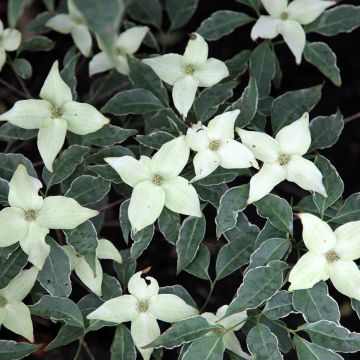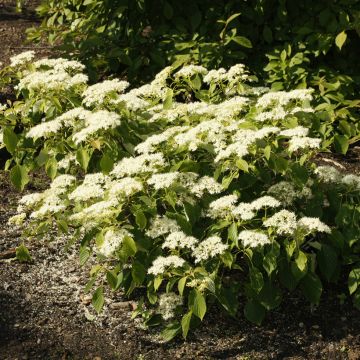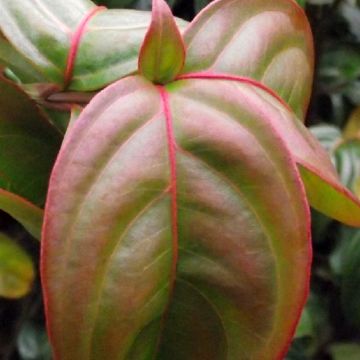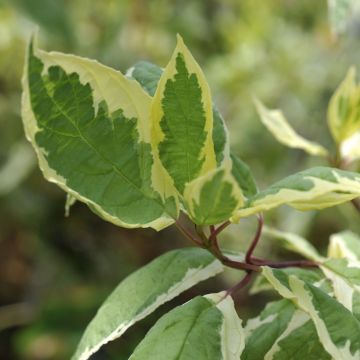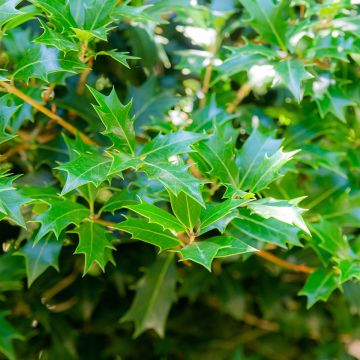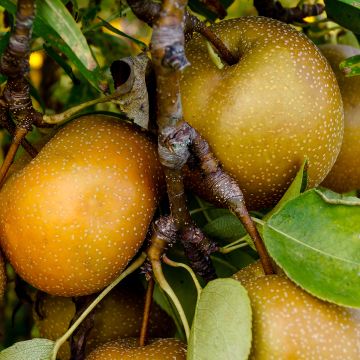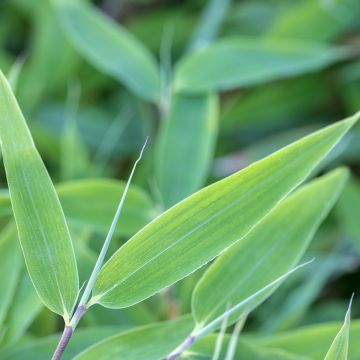

Cornus alba Miracle - White dogwood


Cornus alba Miracle - White dogwood


Cornus alba Miracle - White dogwood


Cornus alba Miracle - White dogwood


Cornus alba Miracle - White dogwood


Cornus alba Miracle - White dogwood


Cornus alba Miracle - White dogwood


Cornus alba Miracle - White dogwood
Cornus alba Miracle - White dogwood
Cornus alba Miracle 'VERPAALEN2'
White Dogwood, Siberian Dogwood
Already bought 3 two years ago, superb... Bought two more to fill a space... Bushes very good.
roland, 21/11/2025
Special offer!
Receive a €20 voucher for any order over €90 (excluding delivery costs, credit notes, and plastic-free options)!
1- Add your favorite plants to your cart.
2- Once you have reached €90, confirm your order (you can even choose the delivery date!).
3- As soon as your order is shipped, you will receive an email containing your voucher code, valid for 3 months (90 days).
Your voucher is unique and can only be used once, for any order with a minimum value of €20, excluding delivery costs.
Can be combined with other current offers, non-divisible and non-refundable.
Home or relay delivery (depending on size and destination)
Schedule delivery date,
and select date in basket
This plant carries a 24 months recovery warranty
More information
We guarantee the quality of our plants for a full growing cycle, and will replace at our expense any plant that fails to recover under normal climatic and planting conditions.

Would this plant suit my garden?
Set up your Plantfit profile →
Description
The Cornus alba 'Miracle' is a variety of small, but remarkably colourful, white dogwood, particularly suited for ornating small spaces and terraces. Its triple-coloured, very pink, young shoots turn to green with cream white and pink margins. In autumn, the leaves are dominated by purple to garnet pink. In winter, the bush offers a naked wood of red colour. The discreet spring blossom is followed by pretty berries of a bluish white color later in the season. Very hardy, undemanding, with all year-round interest, this delightful little white dogwood only has qualities. A must-have!
The Cornus alba Miracle 'VERPAALEN2' belongs to the dogwood family, like all dogwoods. It is a Dutch horticultural creation launched in 2021. Its wild ancestor is native to Siberia, where it is found on the banks of the Amur River as well as in Russia and Manchuria, in moist deciduous and coniferous forests. It is always found near watercourses, under harsh and contrasting climates that testify to its hardiness. The 'Miracle' variety has a bushy, rounded and dense habit, and measures on average 1.10 m (3.8 ft) in all directions at maturity. It is a ramified, fairly slow-growing bush. Its branches are red and shiny, especially when young, and they have the advantage of not becoming bare at the base. The deciduous foliage emerges pink in spring, then variegates into green, cream, and pink, before turning purple before leaf fall. The leaves are full, ovate, clearly veined and undulating, measuring about 5 to 7 cm (2-3 in) in length. Its flowering is not its main asset, being quite discreet, in the form of small yellow-white blooms arranged in cymes, attracting bees. It is followed by fruiting with creamy white to bluish berries containing oily seeds, which turn bluish at maturity. The lower branches form suckers or root into the ground, without the bush being invasive.
Regardless of the size and style of the garden, there will always be a dogwood to provide a beautiful decoration. The white dogwood 'Miracle' is a compact bush that offers a renewing spectacle throughout the year, even when space is limited. Whether integrated into a shrub border, a small mixed hedge, or even placed in a large pot on an urban terrace, it has a great effect. Its association with Caryopteris, shrubby salvias, or autumn asters, which flower late in the season, is very successful. In summer, it accompanies roses and dwarf buddleias, for example.
Report an error about the product description
Cornus alba Miracle - White dogwood in pictures






Plant habit
Flowering
Foliage
Botanical data
Cornus
alba
Miracle 'VERPAALEN2'
Cornaceae
White Dogwood, Siberian Dogwood
Cultivar or hybrid
Other Cornus
View all →Planting and care
The Miracle Cornus alba will thrive in a fertile and humus-rich, moist, even damp, and slightly chalky soil. Plant it from November to March, in a sunny position to enhance the foliage colors, or, if necessary, in bright partial shade. However, avoid excessively hot exposures that could damage the foliage.
Planting period
Intended location
Care
-
, onOrder confirmed
Reply from on Promesse de fleurs
Similar products
Haven't found what you were looking for?
Hardiness is the lowest winter temperature a plant can endure without suffering serious damage or even dying. However, hardiness is affected by location (a sheltered area, such as a patio), protection (winter cover) and soil type (hardiness is improved by well-drained soil).

Photo Sharing Terms & Conditions
In order to encourage gardeners to interact and share their experiences, Promesse de fleurs offers various media enabling content to be uploaded onto its Site - in particular via the ‘Photo sharing’ module.
The User agrees to refrain from:
- Posting any content that is illegal, prejudicial, insulting, racist, inciteful to hatred, revisionist, contrary to public decency, that infringes on privacy or on the privacy rights of third parties, in particular the publicity rights of persons and goods, intellectual property rights, or the right to privacy.
- Submitting content on behalf of a third party;
- Impersonate the identity of a third party and/or publish any personal information about a third party;
In general, the User undertakes to refrain from any unethical behaviour.
All Content (in particular text, comments, files, images, photos, videos, creative works, etc.), which may be subject to property or intellectual property rights, image or other private rights, shall remain the property of the User, subject to the limited rights granted by the terms of the licence granted by Promesse de fleurs as stated below. Users are at liberty to publish or not to publish such Content on the Site, notably via the ‘Photo Sharing’ facility, and accept that this Content shall be made public and freely accessible, notably on the Internet.
Users further acknowledge, undertake to have ,and guarantee that they hold all necessary rights and permissions to publish such material on the Site, in particular with regard to the legislation in force pertaining to any privacy, property, intellectual property, image, or contractual rights, or rights of any other nature. By publishing such Content on the Site, Users acknowledge accepting full liability as publishers of the Content within the meaning of the law, and grant Promesse de fleurs, free of charge, an inclusive, worldwide licence for the said Content for the entire duration of its publication, including all reproduction, representation, up/downloading, displaying, performing, transmission, and storage rights.
Users also grant permission for their name to be linked to the Content and accept that this link may not always be made available.
By engaging in posting material, Users consent to their Content becoming automatically accessible on the Internet, in particular on other sites and/or blogs and/or web pages of the Promesse de fleurs site, including in particular social pages and the Promesse de fleurs catalogue.
Users may secure the removal of entrusted content free of charge by issuing a simple request via our contact form.
The flowering period indicated on our website applies to countries and regions located in USDA zone 8 (France, the United Kingdom, Ireland, the Netherlands, etc.)
It will vary according to where you live:
- In zones 9 to 10 (Italy, Spain, Greece, etc.), flowering will occur about 2 to 4 weeks earlier.
- In zones 6 to 7 (Germany, Poland, Slovenia, and lower mountainous regions), flowering will be delayed by 2 to 3 weeks.
- In zone 5 (Central Europe, Scandinavia), blooming will be delayed by 3 to 5 weeks.
In temperate climates, pruning of spring-flowering shrubs (forsythia, spireas, etc.) should be done just after flowering.
Pruning of summer-flowering shrubs (Indian Lilac, Perovskia, etc.) can be done in winter or spring.
In cold regions as well as with frost-sensitive plants, avoid pruning too early when severe frosts may still occur.
The planting period indicated on our website applies to countries and regions located in USDA zone 8 (France, United Kingdom, Ireland, Netherlands).
It will vary according to where you live:
- In Mediterranean zones (Marseille, Madrid, Milan, etc.), autumn and winter are the best planting periods.
- In continental zones (Strasbourg, Munich, Vienna, etc.), delay planting by 2 to 3 weeks in spring and bring it forward by 2 to 4 weeks in autumn.
- In mountainous regions (the Alps, Pyrenees, Carpathians, etc.), it is best to plant in late spring (May-June) or late summer (August-September).
The harvesting period indicated on our website applies to countries and regions in USDA zone 8 (France, England, Ireland, the Netherlands).
In colder areas (Scandinavia, Poland, Austria...) fruit and vegetable harvests are likely to be delayed by 3-4 weeks.
In warmer areas (Italy, Spain, Greece, etc.), harvesting will probably take place earlier, depending on weather conditions.
The sowing periods indicated on our website apply to countries and regions within USDA Zone 8 (France, UK, Ireland, Netherlands).
In colder areas (Scandinavia, Poland, Austria...), delay any outdoor sowing by 3-4 weeks, or sow under glass.
In warmer climes (Italy, Spain, Greece, etc.), bring outdoor sowing forward by a few weeks.

































